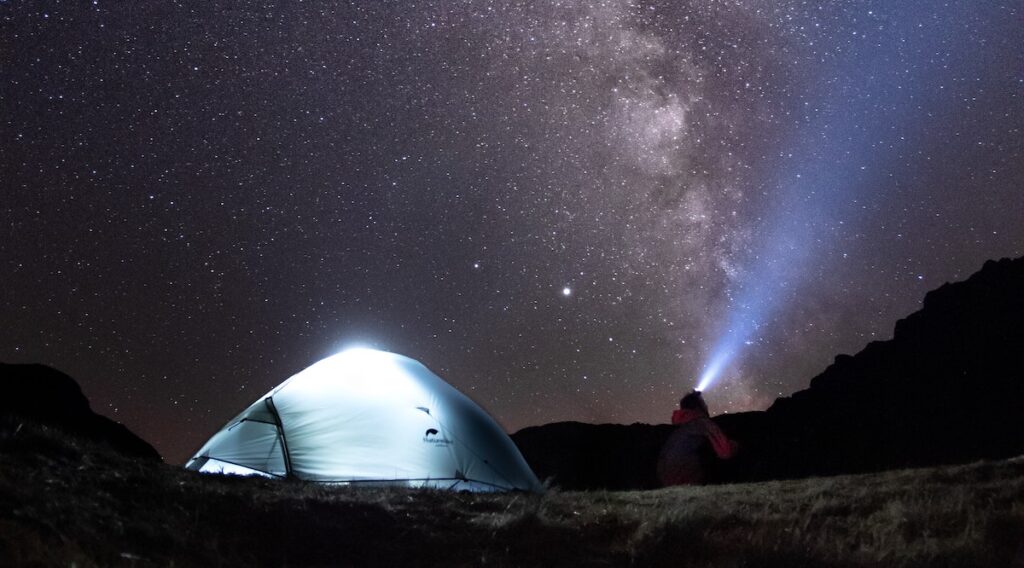Astrophotography is a branch of photography that focuses on capturing images of celestial objects and phenomena, such as stars, galaxies, nebulae, and the Milky Way. This type of photography requires specialised equipment and techniques to produce clear and stunning images of the night sky.
One of the most important pieces of equipment for astrophotography is a camera with manual control, such as a digital single-lens reflex (DSLR) or mirrorless camera. A camera with manual control allows the photographer to adjust settings such as exposure time, aperture, and ISO sensitivity to capture the details of the night sky. A sturdy tripod is also essential to keep the camera steady during long exposures and prevent blurry images.
In addition to the camera and tripod, a lens with a wide aperture, such as a fast, wide-angle lens, is ideal for astrophotography. A fast lens allows more light into the camera, which is crucial for capturing images in low light conditions. A lens with a wide field of view can also help capture large portions of the night sky.
Another key aspect of astrophotography is post-processing. Raw images of the night sky often require adjustments to bring out the details and colours of the celestial objects. This can involve using software such as Adobe Photoshop or Lightroom to correct exposure, remove noise, and adjust colour balance.
Astrophotography can also be enhanced through the use of specialised equipment such as star trackers, which keep the camera pointed at a celestial object during a long exposure, and intervalometers, which can automate the process of taking multiple photos in succession.

One of the challenges of astrophotography is dealing with light pollution. Light pollution can wash out the stars and make it difficult to capture clear images of the night sky. To minimise light pollution, photographers often travel to dark sky locations, away from city lights, to capture the night sky in its full glory.
Astrophotography can be a rewarding and challenging type of photography. With the right equipment and techniques, it is possible to capture stunning images of the night sky that showcase the beauty and complexity of the universe. Whether you are a beginner or an experienced photographer, astrophotography is a fascinating and endlessly fascinating field that offers endless opportunities for creativity and discovery.
Do I need a telescope for astrophotography
No, you do not necessarily need a telescope for astrophotography. While telescopes can be useful for capturing images of specific celestial objects, such as planets or distant galaxies, they are not required for general astrophotography. A camera with manual control, a tripod, and a fast, wide-angle lens can be used to capture images of the night sky, including stars, the Milky Way, and other celestial objects. In some cases, a telescope may actually limit the field of view, making it difficult to capture wide-angle shots of the night sky. The choice of whether or not to use a telescope in astrophotography will depend on your specific goals and the type of images you want to capture.

Top 10 astrophotography targets for beginners
Here are ten popular astrophotography targets for beginners:
- The Moon – The Moon is a great first target for beginner astrophotographers. It is bright and easy to find, and can be captured with just a camera and a telephoto lens.
- The Milky Way – The Milky Way is a stunning view of the galaxy that is visible from many locations on Earth. A wide-angle lens and a clear, dark sky are required to capture this iconic target.
- Star Trails – Star trails are a type of long exposure photo that captures the movement of the stars over time. They can be captured by leaving the camera’s shutter open for several minutes.
- The Orion Nebula – The Orion Nebula is a nearby cloud of gas and dust that is easily visible with the naked eye. A long exposure photo can reveal its colourful and detailed structure.
- The Andromeda Galaxy – The Andromeda Galaxy is a distant spiral galaxy that is visible from Earth. It can be captured with a camera and a telephoto lens.
- The Pleiades – The Pleiades is an open star cluster that is easily visible with the naked eye. It can be captured with a wide-angle lens and a clear, dark sky.
- The North Star – The North Star, also known as Polaris, is the brightest star in the constellation Ursa Minor. A long exposure photo can capture the stars in the night sky rotating around it.
- Meteor Showers – Meteor showers are a regular occurrence that can produce dozens of shooting stars per hour. They can be captured with a camera and a wide-angle lens.
- The International Space Station (ISS) – The ISS is a visible, moving object in the night sky that can be captured with a long exposure photo.
- The Zodiacal Light – The Zodiacal Light is a faint, glowing band of light that is visible in the night sky. It can be captured with a wide-angle lens and a clear, dark sky.
These are just a few of the many astrophotography targets that are accessible to beginners. With the right equipment and techniques, the night sky is an endless source of fascinating and beautiful subjects to capture and explore.

